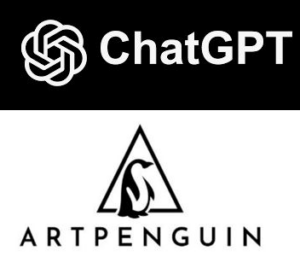
Comforta Slippers: No Copyright Protection
In Dutch practice, businesses often invoke copyright to protect the shape of everyday goods, but model (design) law is far more appropriate for this aim.
Copyright arises by creation itself and gives the creator the exclusive right to reproduce the creation and to publish it. The rights are acquired by the creator of a certain work and (in many countries), there are no registration requirements as is the case with trademarks, designs and patents. Companies use the copyright symbol © to indicate that a particular creation is protected by copyright. It is important that there must be a final creation. Think of a book, music, product design or artwork. Virtually everything we see around us, hear, or use may be copyrighted. Legally what matters is that the work must be original, that it is an intellectual creation of the creator. In short, that it has something unique and creative (but that threshold is very low and almost all the products of applied art are included). An idea, a theory, or a certain style is not open to protection, only the specific physical implementation thereof.
The reason for copyright not having a (difficult) registration requirement is to keep the threshold of obtaining copyright as low as possible. The main goal is to give the original creator a duty to ensure that he gets a good financial compensation if his creation is used. So he may then share in the success. The right is valid for seventy years (after first publication or the death of the creator), but also quite easy to transfer to other parties.
For that reason, it is important to be aware of these matters at the start of a creation process. Ask yourself if the copyrights of the project (e.g. the development of a new logo or design of a new product) will be transferred and if so under what conditions. Exactly because copyright has a central role in the creation process in advertising, it is necessary to check what needs to be done to claim rights / or prevent it from being infringed.
Copyright also has a number of very specific provisions, such as portrait rights. Not everyone can simply be portrayed. Portrait is used in a somewhat wider sense, it involves a recognizable expression (i.e. caricatures and look-a-likes are also below). If someone has a cashable popularity he may oppose this monetization, others may use their portrait rights to prevent from being associated with a certain product or as part of right to privacy.
Be mindful that the creator of the work (a photographer or illustrator) itself has copyright on this work as well. Be careful with the use of images and photos that can be found on the internet. Check whether the rights of the creator have been bought (the fact that the images are online, does not mean that they may be freely used) and if someone is clearly shown in a picture, check whether the model has given permission for the photo and use.
In addition to copyright issues, trademark rights should be taken into account when dealing with advertising. Competitors’ trademarks may be used in a Google Adwords campaign, how can trademarks of others be used in the context of comparative advertising or to explain that a product may be used in conjunction with the product of the proprietor? Special attention is given to further slogans. These are widely used in advertising, but a monopoly over these through trademark rights is often difficult to get. And it is very doubtful whether a claim may be made through copyright. Alternatively, sometimes there a claim may be made through the registry in the Slogan Register.


In Dutch practice, businesses often invoke copyright to protect the shape of everyday goods, but model (design) law is far more appropriate for this aim.

During major sporting events, it’s tempting for bars and restaurants to let guests enjoy the match. But is that allowed?

Lego produces toys for all ages. The LEGO Botanical Collection, a modular building system for creating flowers, is specifically aimed at adults. Not only is the LEGO brand registered for

In 2019, Rituals Cosmetics launched a new line of reed diffusers. To protect its distinctive shape, the company immediately applied for an EU design registration.

A remarkable trademark case before the Benelux authorities: Can Chat GPT represent a trademark owner? A critical look at the defense against Penguin Books and the legal implications of AI

Some artists use trademarks to highlight societal problems. For the owner of the trademark in question this is often unpleasant. The trademarks is linked to nasty experiences. In case of
Call us: 071-5763116 or send an e-mail to: info@abcor-ip.com
Een korte introductie tekst over de nieuwsbrief waarin je uitlegt wat het is. Hoe je direct de nieuwste editie kunt lezen en hoe je je kunt abonneren. And click here for all the numbers.
Among others in this issue:
• EUIPO vs Mora TV: weigering geluidsmerk
• Jägermeister vs Alte Heiler: stop Russische copycat
• Stichting Nederlandse Top 40: gericht op Benelux?
• Tijdschrift HART vs Hermitage: soortgelijkheid
• Monique Granneman: nieuwe partner Abcor